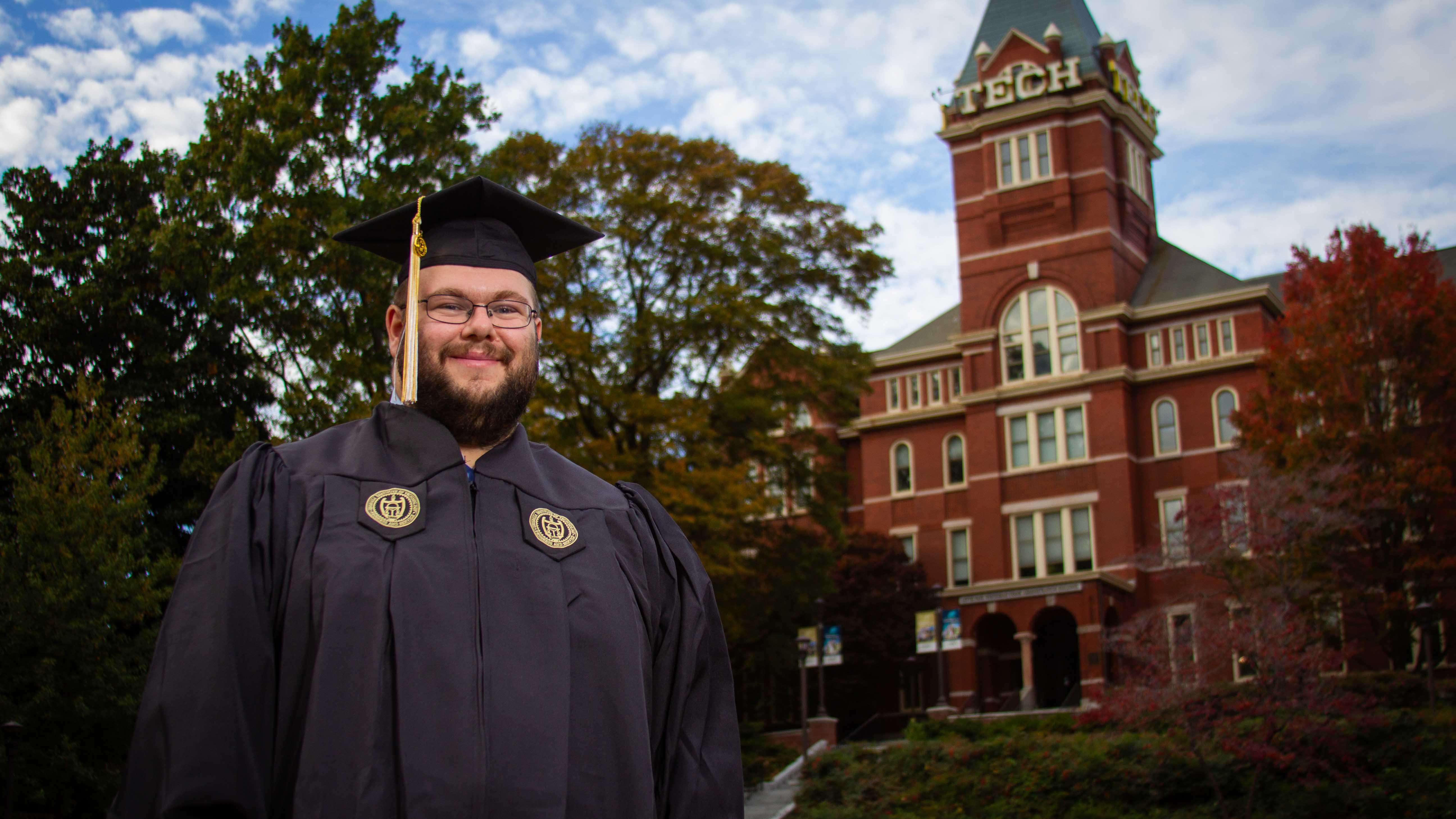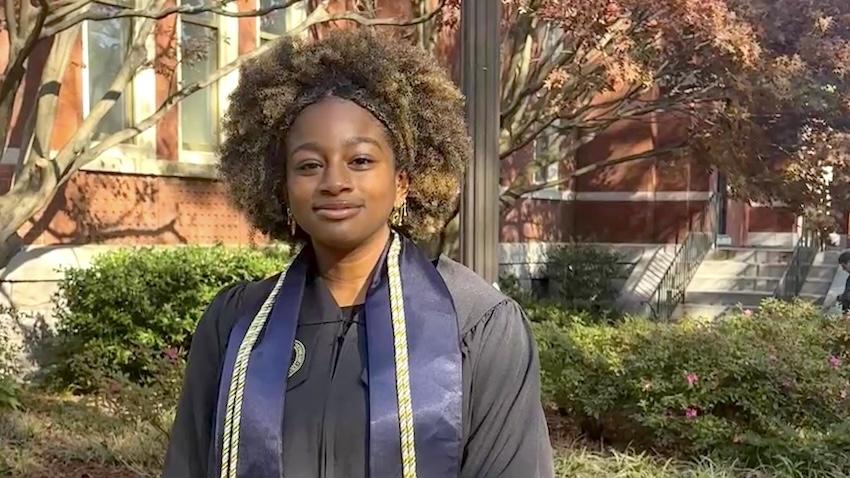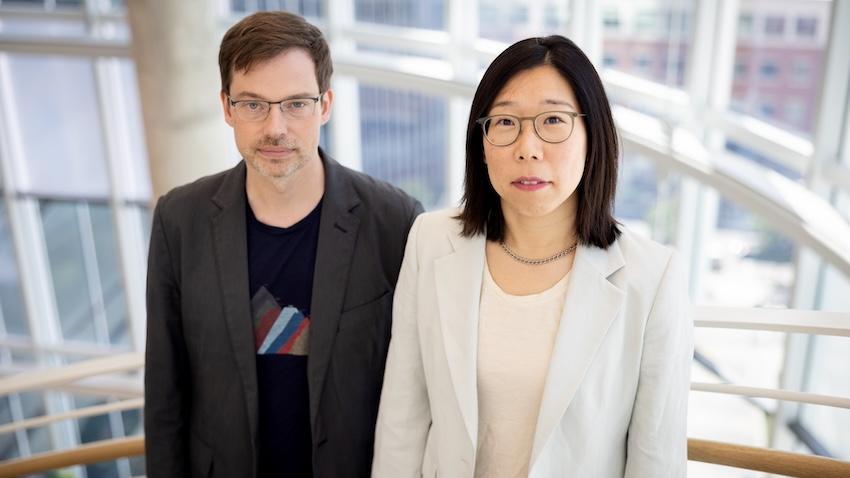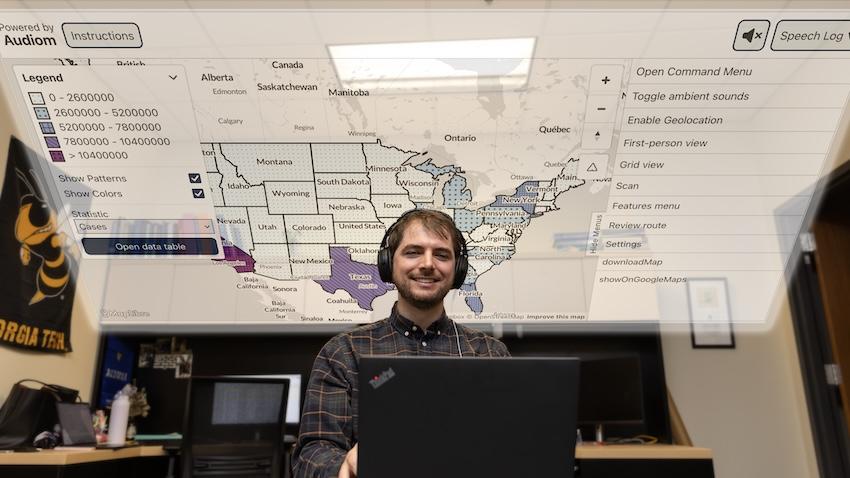
Ph.D. Student Making Digital Maps That Blind People Can Hear
“Map region. Graphic clickable. Blank.”
That’s usually the only information Brandon Biggs receives from digital maps.
Biggs is a human-centered computing Ph.D. student in Georgia Tech’s School of Interactive Computing. He is almost totally blind due to Leber’s Congenital Amaurosis (LCA), a rare degenerative eye disorder affecting about one in 40,000 people.
Based on his experience, Biggs argues that most digital maps aren’t accessible to people who are blind. Even worse, he said, the needs of the blind are usually overlooked.
“When I started research on maps, I had never viewed a weather, campus, or building map, so I didn’t realize the amount of information maps contain,” Biggs said. “How do you represent shapes, orientation, and layout through audio and translate that into a geographic map?”
To answer these questions, Biggs founded XRNavigation, a company focused on developing accessible digital tools. Its flagship product, Audiom, is a cross-sensory map that people can see and hear through text.
“Sighted people view about 300 maps per year, while blind people view fewer than one,” he said. “Blind people don’t view maps; it’s not part of their lives.
“I want to ensure that for blind users, digital maps are no longer just ‘blank.’ They receive the information they need to know to navigate in this world and become more autonomous.”
Organizations that need to include accessible maps in their digital spaces can integrate Audiom into their website or app.
Georgia Tech recently became one such organization and used Audiom to introduce the first fully accessible digital campus map.
Professor Bruce Walker advises Biggs in Walker’s Sonification Lab, which designs auditory displays for technologies.
“Brandon has the perfect and unique blend of technical skills, research savvy, innovativeness, lived experience, and never-stop attitude to tackle this problem while impacting and improving many lives,” Walker said.
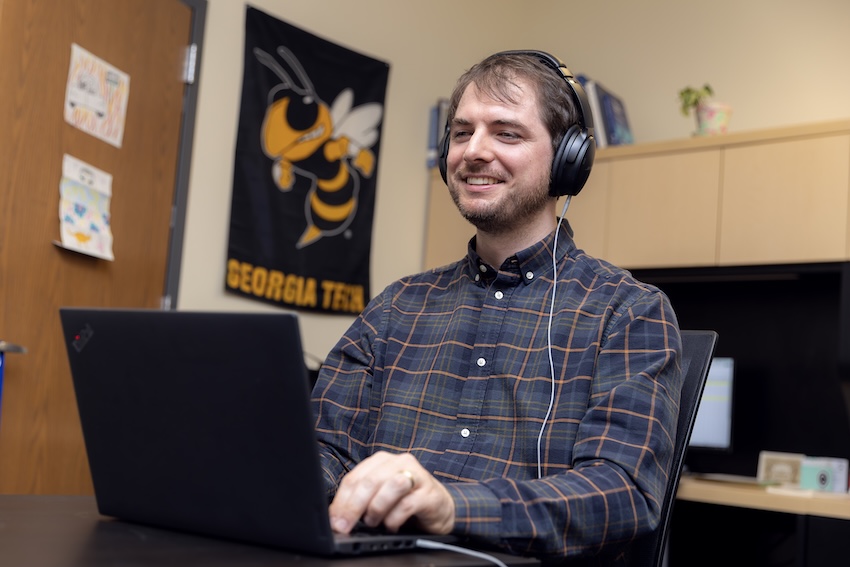
Defining Accessibility
Biggs said most maps limit accessibility features to turn-by-turn directions, tables, or other kinds of alternative text that disregard spatial information. The ability to communicate spatial information distinguishes Audiom.
“According to Web Content Accessibility Guidelines (WCAG), all non-text content — like maps — must include a text alternative with an equivalent purpose,” Biggs said. “But what does ‘equivalent purpose’ mean for geographic maps?
“We argue that every single map, regardless of what it’s showing, communicates general spatialized information and relationships.”
Audiom also prioritizes the information that’s most important to blind users, including sidewalks and buildings.
“There’s a lot of information blind people just don’t get on maps but desperately need,” he said. “They couldn’t care less about the roads. They might need the road name, but they really need the sidewalks.
“If a blind person made a map, they might not even add the roads. And then they would add in the location of doorways, a critical detail that sighted people completely leave out.”
Biggs’s work is already gaining national recognition. XRNavigation was recently one of three companies selected by the Global Accessibility Awareness Day (GAAD) Foundation for a 2025 Gaady Award, which honors work being done to make digital technologies more accessible.
Past and present winners of Gaady Awards range from tech startups to major brands like T-Mobile.
Biggs will accept the award during a banquet on Thursday in San Francisco.
